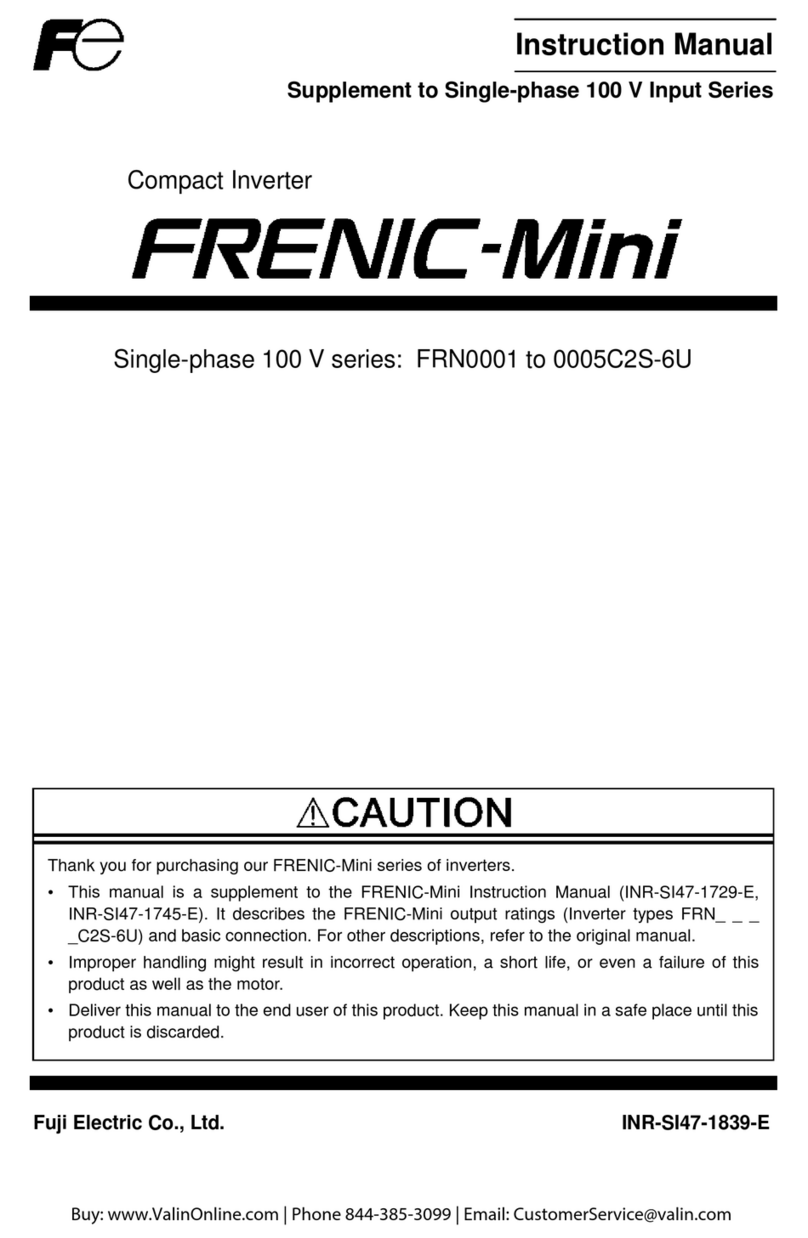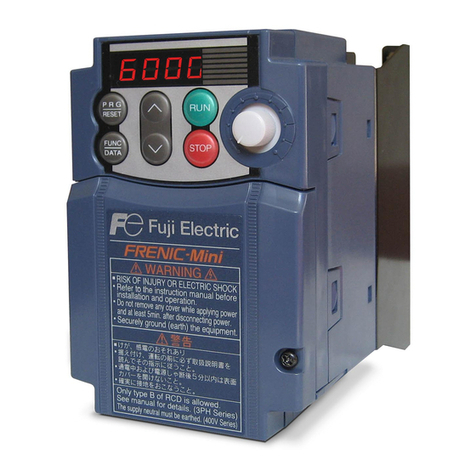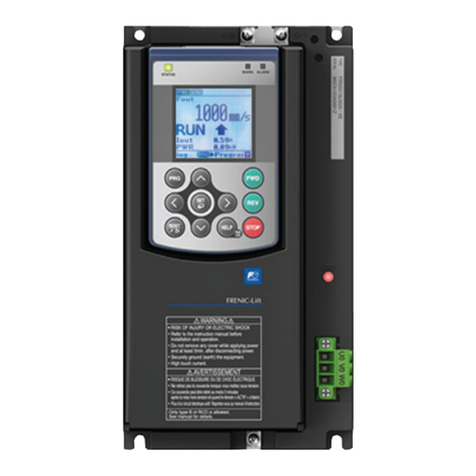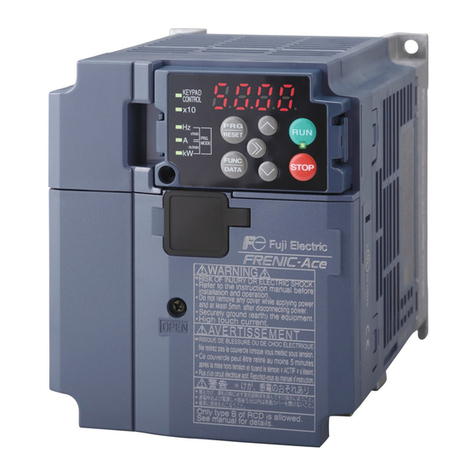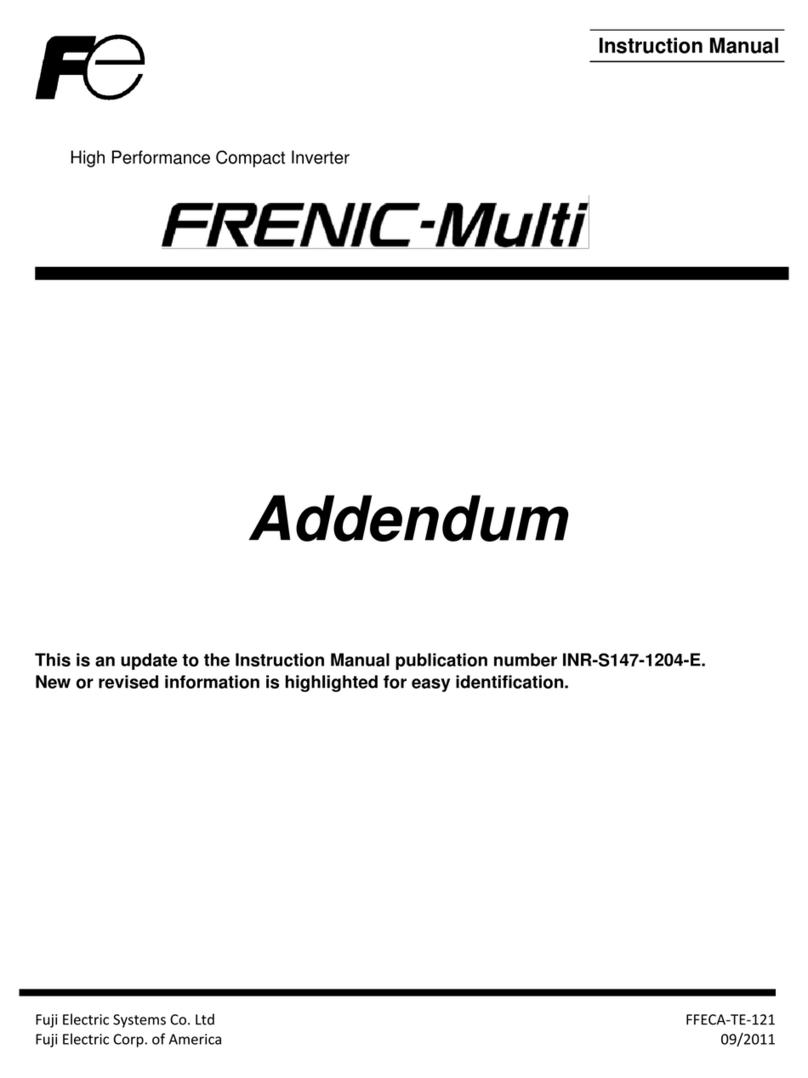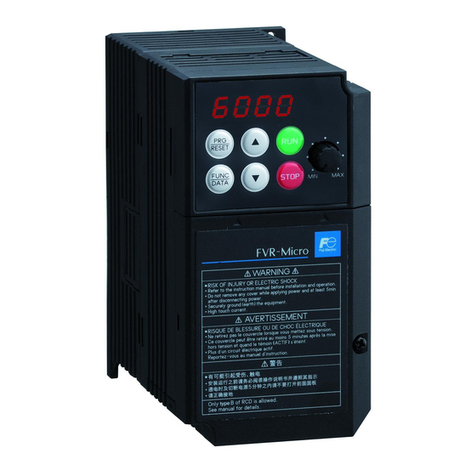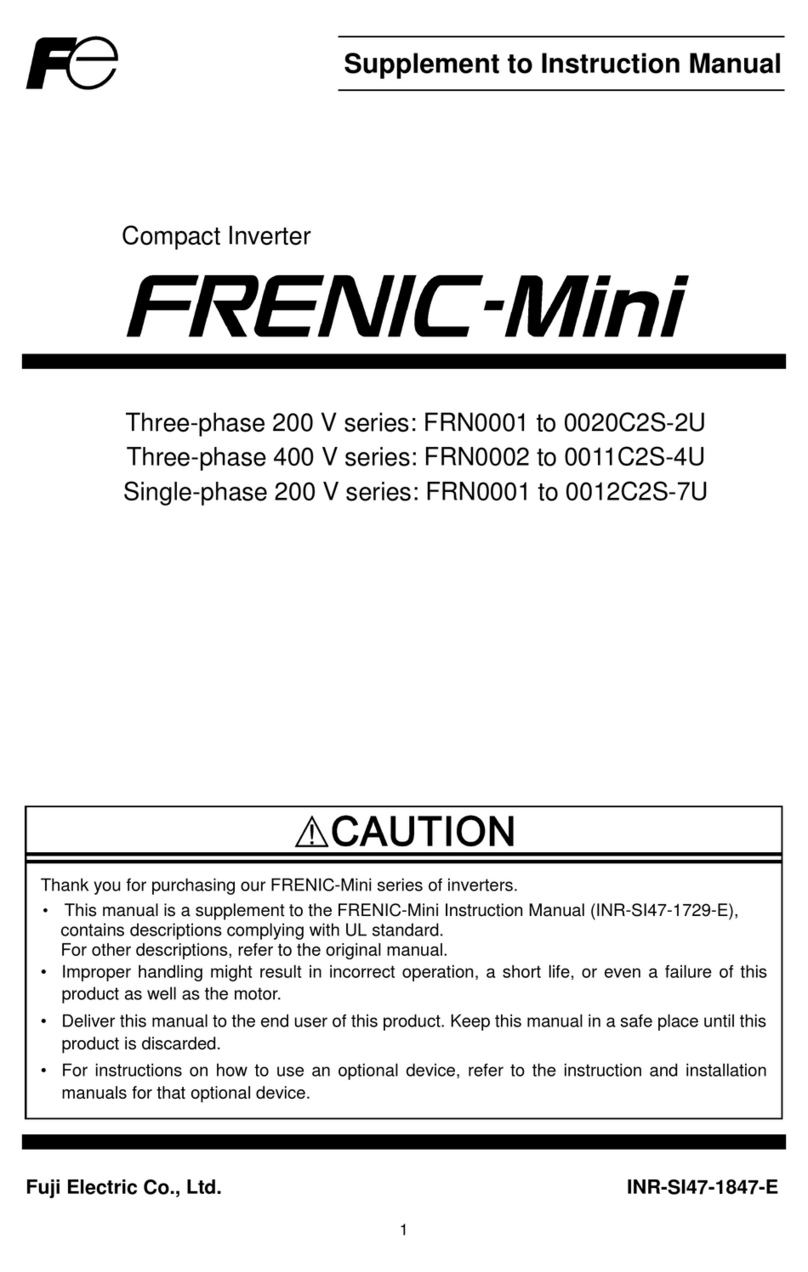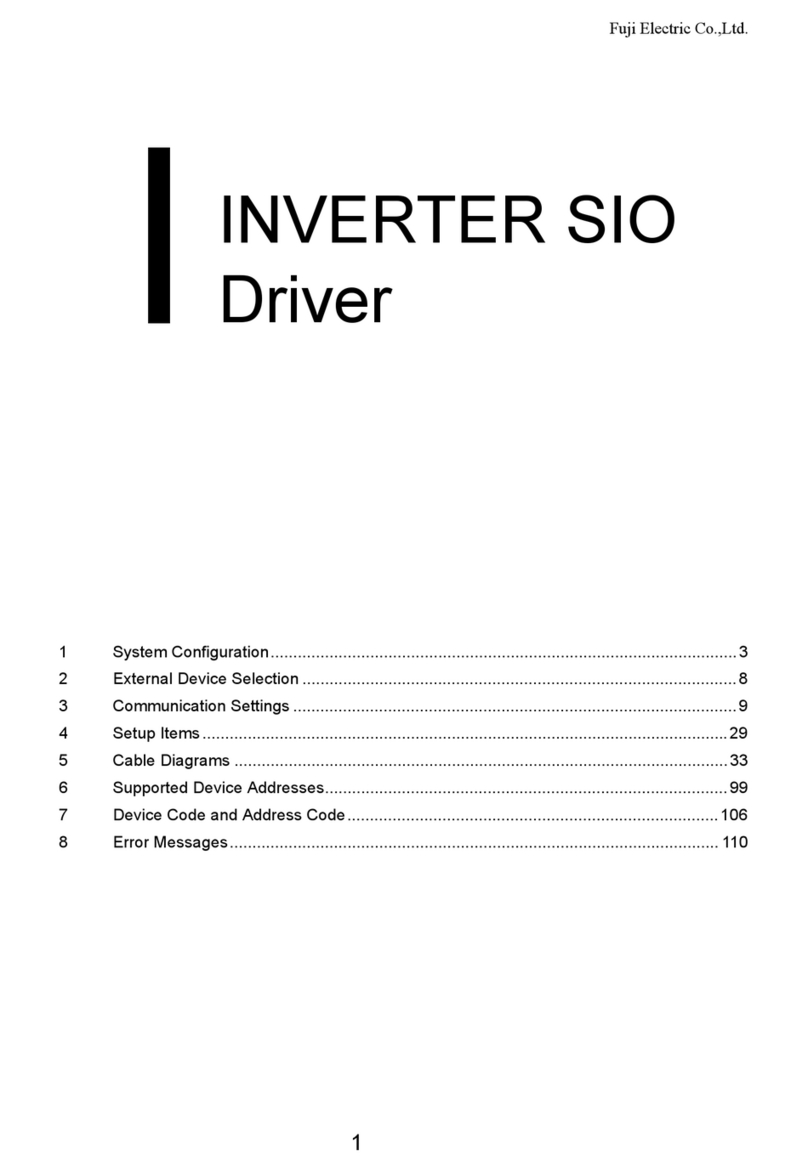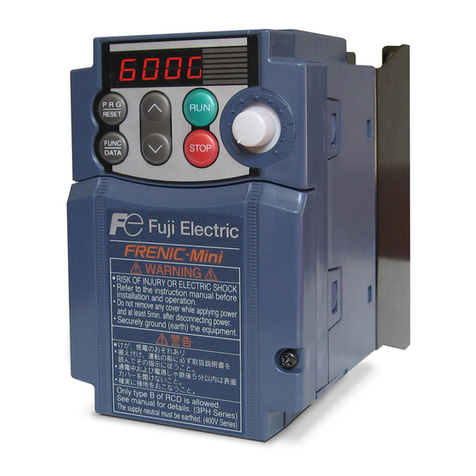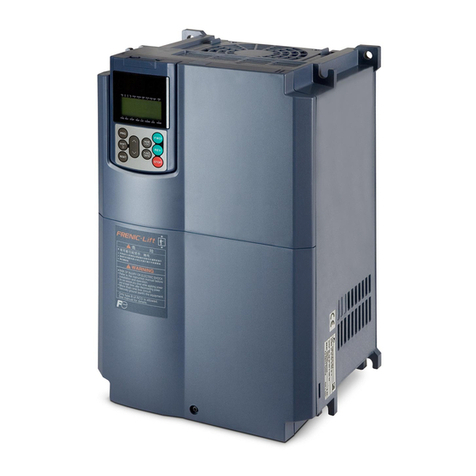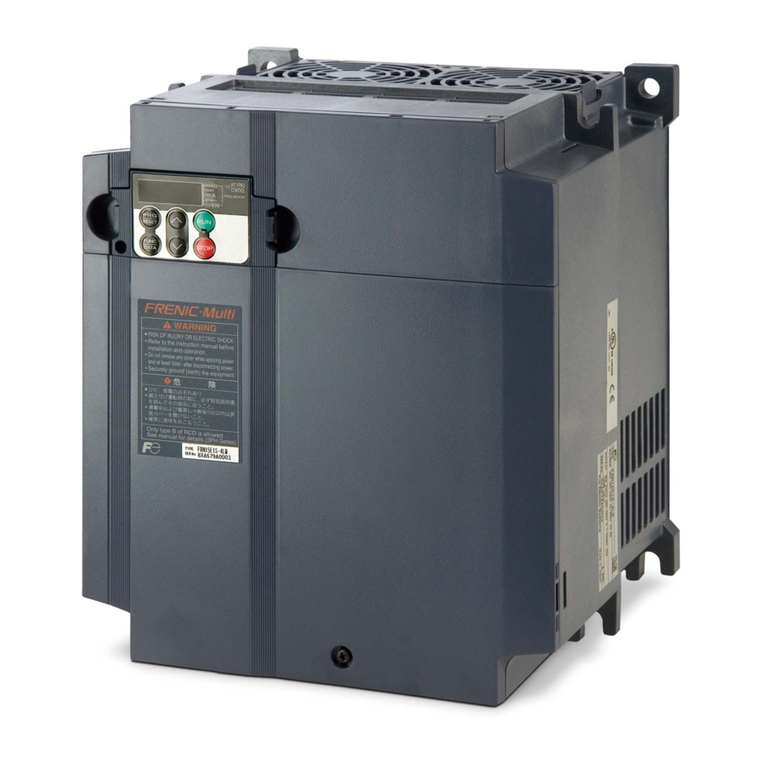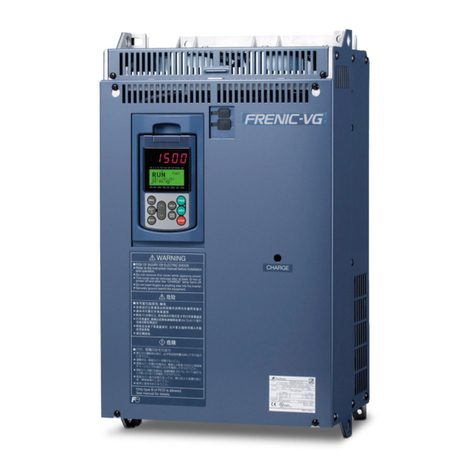Precautions for use
Driving a 400 V
general-purpose
motor
When driving a 400V general-purpose motor with an inverter using extremely long wires, damage
to the insulation of the motor may occur. Use an output circuit filter (OFL) if necessary after
checking with the motor manufacturer.
Torque
characteristics
and temperature
rise
When the inverter is used to run a general-purpose motor, the temperature of the motor becomes
higher than when it is operated using a commercial power supply. In the low-speed range, the
cooling effect will be weakened, so decrease the output torque of the motor.
Vibration
When an inverter-driven motor is mounted to a machine, resonance may be caused by the natural
frequencies of the machine system.
Note that operation of a 2-pole motor at 60 Hz or higher may cause abnormal vibration.
* The use of a rubber coupling or vibration-proof rubber is recommended.
* Use the inverter's jump frequency control feature to skip the resonance frequency zone(s).
In running
general-
purpose
motors
Noise When an inverter is used with a general-purpose motor, the motor noise level is higher than that
with a commercial power supply. To reduce noise, raise carrier frequency of the inverter.
Operation at 60 Hz or higher can also result in higher noise level.
High-speed
motors If the reference frequency is set to 120 Hz or more to drive a high-speed motor, test-run the
combination of the inverter and motor beforehand to check for safe operation.
Explosion-proof
motors When driving an explosion-proof motor with an inverter, use a combination of a motor and an
inverter that has been approved in advance.
Submersible
motors and
pumps
These motors have a larger rated current than general-purpose motors. Select an inverter whose
rated output current is greater than that of the motor.
These motors differ from general-purpose motors in thermal characteristics. Set a low value in the
thermal time constant of the motor when setting the electronic thermal function.
Brake motors
For motors equipped with parallel-connected brakes, their power supply for brake must be
supplied from the primary circuit. If the power supply for brake is connected to the inverter's output
circuit, the brake will not work.
Do not use inverters for driving motors equipped with series-connected brakes.
In running
special
motors
Geared motors If the power transmission mechanism uses an oil-lubricated gearbox or speed changer/reducer,
then continuous operation at low speed may cause poor lubrication.Avoid such operation.
Synchronous
motors It is necessary to take special measures suitable for this motor type. Contact your Fuji Electric
representative for details.
In running
special
motors Single-phase
motors
Single-phase motors are not suitable for inverter-driven variable speed operation. Use three-
phase motors.
In the event of a single phase supply to the inverter, a three phase motor must still be used as the
inverter outputs three phase only.
Environ-
mental
conditions
Installation
location
Use the inverter within the ambient temperature range from -10 to +50°C.
The heat sink and braking resistor of the inverter may become hot under certain operating
conditions, install the inverter on nonflammable material such as metal.
Ensure that the installation location meets the environmental conditions specified in Chapter 2,
Section 2.1 "Operating Environment."
Installing an
MCCB or
RCD/ELCB
Install a recommended moulded case circuit breaker (MCCB) or residual-current-operated
protective device (RCD)/earth leakage circuit breaker (ELCB) (with overcurrent protection) in the
primary circuit of the inverter to protect the wiring. Ensure that the circuit breaker rated current is
equivalent to or lower than the recommended rated current.
Installing an MC
in the secondary
circuit
If a magnetic contactor (MC) is mounted in the inverter's output (secondary) circuit for switching
the motor to commercial power or for any other purpose, ensure that both the inverter and the
motor are completely stopped before you turn the MC ON or OFF.
Do not install magnetic contactors with built-in surge killer on the output of the inverter (secondary
circuit).
Installing an MC
in the primary
circuit
Do not turn the magnetic contactor (MC) in the primary circuit ON or OFF more than once per
hour as an inverter failure may result.
If frequent starts or stops are required during motor operation, use terminal [FWD]/[REV] signals
or the RUN/STOP key.
Combina-
tion with
peripheral
devices
Protecting the
motor
The electronic thermal function of the inverter can protect the motor. The operation level and the
motor type (general-purpose motor, inverter motor) should be set. For high-speed motors or
water-cooled motors, set a small value for the thermal time constant and protect the motor.
If you connect the motor thermal relay to the motor with a long wire, a high-frequency current may
flow into the wiring stray capacitance. This may cause the relay to trip at a current lower than the
set value for the thermal relay. If this happens, lower the carrier frequency or use the output circuit
filter (OFL).
